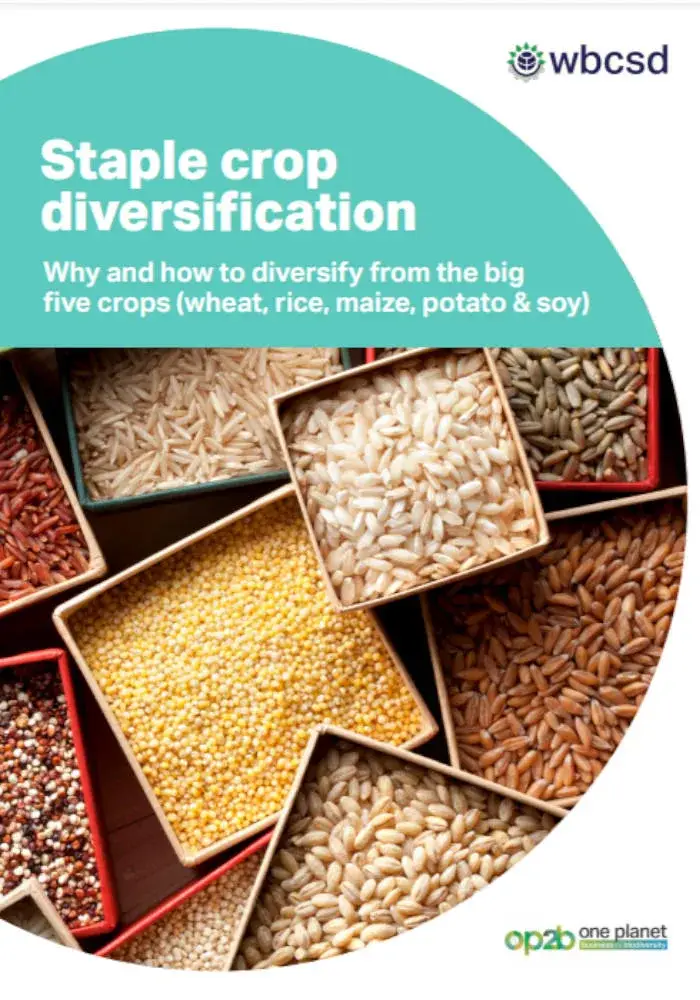
Published
26 July, 2021Type
PublicationFood systems heavily rely on five key commodities (wheat, rice, maize, potatoes, and soy), with the global calorie production concentrated around a limited set of commodity crops grown using intensive methods in a small number of breadbasket regions.
Intensive crop production of maize, rice and wheat has almost doubled over the past 50 years. Today, these three commodities are the single biggest food products in the human diet, accounting for an estimated 42.5% of the world’s calories supply. It is much higher in developing countries, e.g., in many parts of Asia rice alone can provide up to 80% of caloric intake.
The lack of diversity in staple crop production and consumption drives a number of negative health, social and environmental impacts around the world and jeopardizes our capacity, especially during the current climate crisis, to provide healthy and sustainable diets to 9 billion people by 2050, within planetary boundaries.
What is it about:
The Staple crop diversification paper outlines the appropriateness and feasibility of diversifying food value chains from the big five crops that dominate them today, meaning wheat, rice, maize (also known as corn), soy and potatoes (referring broadly to any roots/tubers).
New business models are needed to ensure that diversity in staple crops across the value chain stages emerges to safeguard their resilience and economic viability in the medium and long terms, while also potentially delivering better nutrition. A comprehensive and coordinated approach to diversifying staple crops that mixes consumption, transformation, trade and production levers has the best chance of succeeding.
The paper will form the foundation of a dialogue with companies aimed at identifying solutions for such diversification at production, trade, procurement, product design and consumption levels, creating new markets and business opportunities that can align with and contribute to the UN Sustainable Development Goals (SDGs) and to achieving the Paris Climate Agreement.
Key findings:
In this paper, we uncover the challenges and opportunities of diversifying production, procurement, manufacturing and consumption to go beyond the traditional big five crops and to help inform decision-making in companies and other key stakeholder groups.
As tensions on raw materials start to emerge, the overall resilience challenge is evolving as a business risk for several companies. Acknowledging that none of the companies – regardless of their size – can fix it alone, there is growing corporate interest in working pre-competitively via coalitions or associations to develop solutions. One Planet Business for Biodiversity (OP2B) is one such coalition. Although signed off at the highest level of management, the operating challenge for the business sustainability agenda remains: How to partner best to cover the cost of changes generated by transforming from a truly optimized supply chain model? How to move from a cost-to-production ratio to societal value while still delivering the expected margins ?
The Food Systems Summit 2021 and the Nutrition for Growth Summit 2021 provide unique opportunities for businesses and other stakeholders to come together in coalitions of action that aim to renew humanity’s relationship with how it produces and consumes food – from governments and NGOs to the people who are the end-customers of these companies.
Outline
